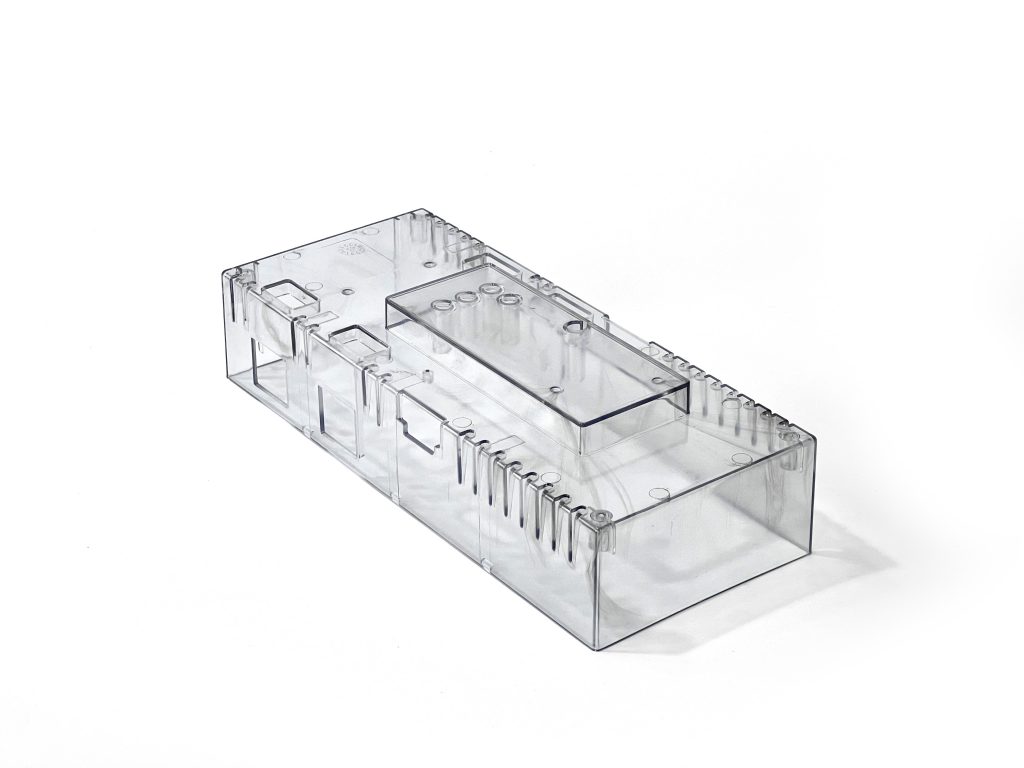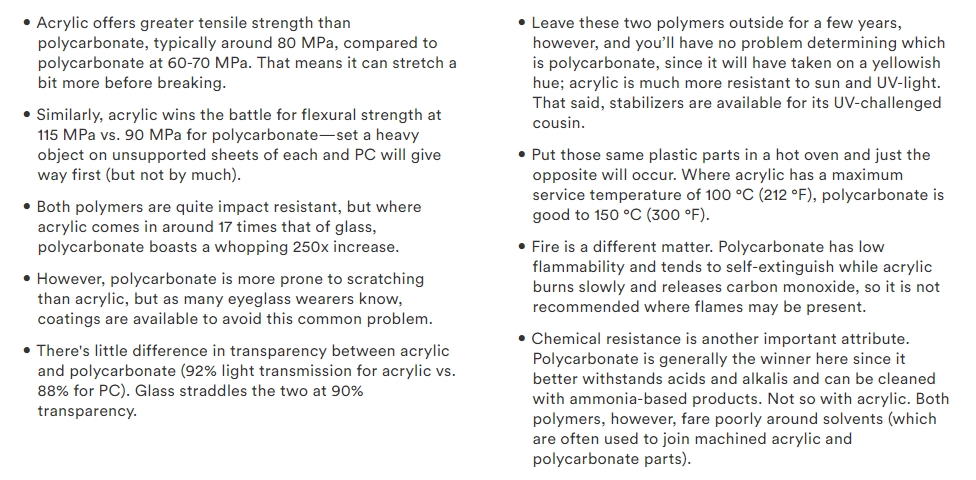Maybe you’re designing an optically clear plastic cover for a drone camera. Or perhaps your next project is a biocontainment chamber for a medical lab or an LED light diffuser that will be part of an electronics assembly. Each of these requires a polymer that is transparent and depending on the environment in which it will function, resistant to sunlight, heat, chemicals, scratches, and impacts.
Finding a plastic that meets these criteria might sound difficult, but fear not—whether you’re planning to have these parts CNC machined, plastic injection-molded, or 3D printed, you’re in luck. We offer our customers numerous material options for each of these manufacturing processes, all of which fall into one of two broad categories—acrylic and polycarbonate. Both meet the requirements listed above to varying degrees.
Which material and process are best for your project? As with many things in manufacturing, the answer is far from black and white: it depends on various factors, including available budget, turnaround time, design criteria, and much more. Below is a brief comparison of their mechanical, physical, and chemical properties to get you started.

Acrylic (PMMA) vs. Polycarbonate (PC) Attributes

Bear in mind that these are generalizations, and that designers should reference the material data sheet for the specific properties of any material. All material data can be found here.
Manufacturing Options for Acrylic and Polycarbonate
How the polymer is made—whether it was cast, molded, printed, or extruded—also plays a significant role in its mechanical and thermal properties. Each material in all its many forms has unique strengths and weaknesses, and the choice of which to use should be based on the requirements of the specific project or application.
So what are those applications? And how does one know whether to machine a part or 3D print it, or invest a few bucks for the tool needed to injection mold it?
Let’s start there. Both materials are readily machined and easily molded, so few limitations exist; which one to use is therefore more dependent on the material properties just described. Also, we carry multiple grades, colors, and fill options for each, although acrylic options are a bit more limited. This last statement is especially true for 3D-printed parts, because only “PC-like” polycarbonates are available due to availability of the resins used for the stereolithography process. Sorry, no acrylic-like 3D printing materials.
Acrylic vs. Polycarbonate Applications
Manufacturing processes aside, acrylic is typically best suited for parts requiring optical clarity and scratch resistance, but that will not suffer significant impacts. Polycarbonate is ideal for both high impact resistance and durability—the case for your smartphone might be made of polycarbonate, as are the bulletproof windows at the bank where you deposit your paycheck (although these are usually a sandwich-like composite of glass, PC, and possibly acrylic, depending on the manufacturer).
Some other polycarbonate examples include see-through medical components (polycarbonate is also biocompatible), headlight covers, instrument panels, and other applications where superior strength, heat resistance, and low water absorption are needed. Again, though, look for a UV-stabilized grade for extended outdoor use.
Acrylic, thanks to its slightly lower costs, is a favorite of sign makers and manufacturers of large display cases, but is also comparable to polycarbonate in many applications. Transparent packaging is one example, as are sample containers for medical uses, machine guards, optical components, and much more.
Simply put, there’s a fair amount of overlap between acrylic and polycarbonate and the two are often interchangeable. For demanding or very high-volume needs, though, it’s a good idea to do your homework and check with one of our applications engineers for advice.